Cooking is never just about food—it’s about stories, memories, and the people who share them. In Chiang Mai, one of the most memorable and meaningful experiences we had was joining May Kaidee’s vegan cooking class. While many cooking schools across the city offer vegan options, May Kaidee is unique in that it is entirely, unapologetically vegan. That alone makes it stand out, but as we quickly learned, there’s so much more to May’s world than a menu without meat or dairy.
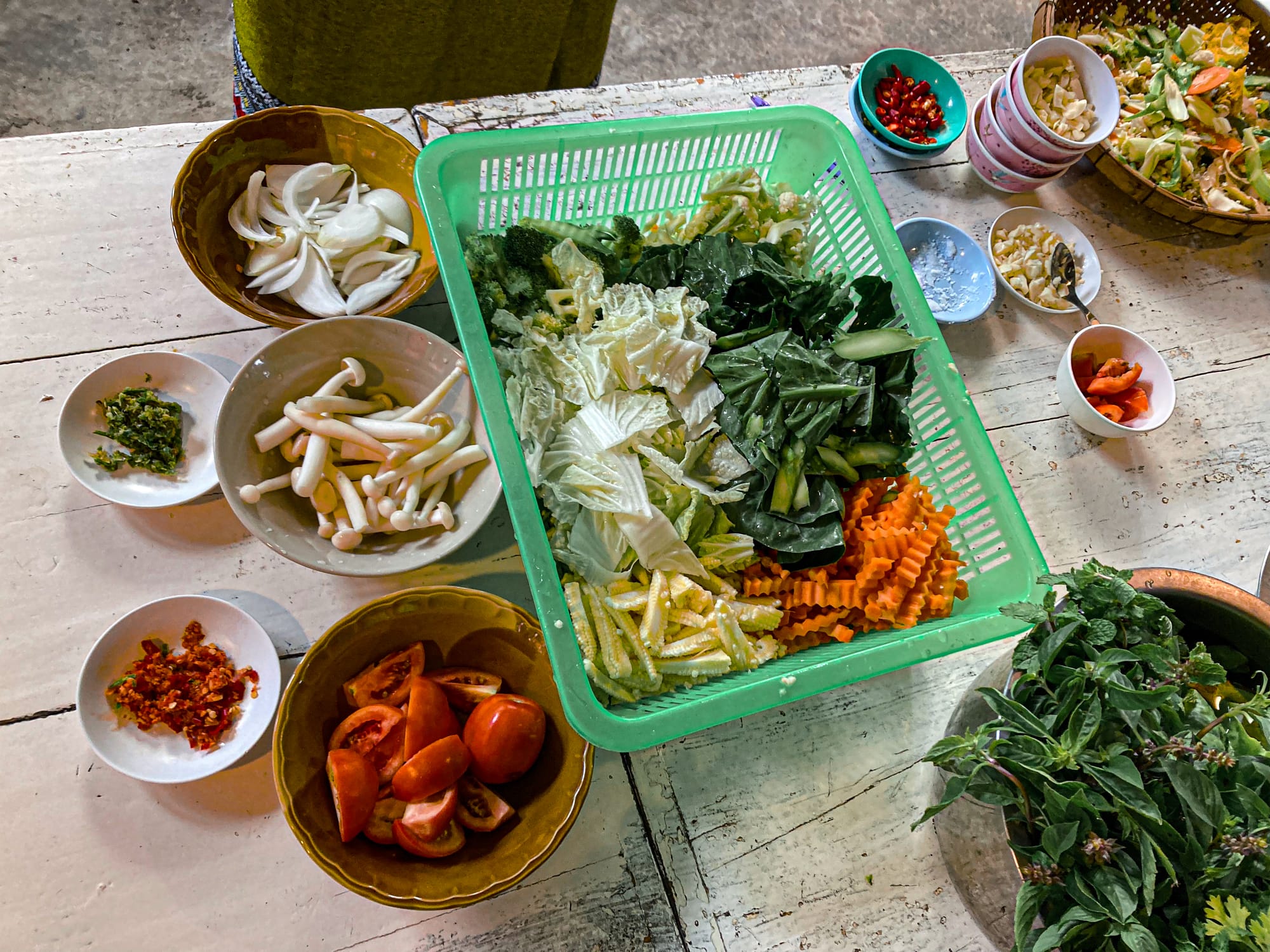
From the moment we stepped in, we were greeted with an abundance of fresh vegetables, herbs, spices, and fruits. The tables were colorful with baskets of produce that looked like they had just come from the morning markets—lemongrass, kaffir lime leaves, Thai basil, pumpkin, chilies, galangal, and endless greens. There was a tactile joy in simply being surrounded by it all.
From farmer’s daughter to vegan Thai pioneer
Born Sommay Jaijong in a rural northeastern Thai farming village, May Kaidee grew up immersed in tradition and the rawest realities of local cuisine. On her family’s land in Sisaket province, foraged dishes like snake curry weren’t exotic—they were sustenance. Early life meant working alongside her mother and learning to cook what the land yielded, whether it be field-grown vegetables or whatever wildlife crossed the path. School didn’t resonate, and in 1988, a young Sommay made her way to Bangkok to help run her aunt’s humble vegetarian street cart. That decision would mark the genesis of something extraordinary.
Moving to the city, she brought the forthright warmth of her village life to every dish she touched. Drawn inadvertently into vegetarian cooking while assisting in that cart, she learned—not formally, but through daily practice and experimentation—that she could survive and thrive on plant-based food. Cooking, she discovered, wasn’t just survival; it was transformation. Her body responded, her health improved, and she committed to vegan life—not for ideology, but because it saved her digestion, her energy, and ultimately her identity.
Over the next decades, what began as simple vegetarian food spun into a culinary movement. May transformed that anonymous street vendor into May Kaidee’s, building a chain of vegan restaurants and cooking schools across Bangkok, Chiang Mai, and even as far away as New York. Her business name—May, her nickname, and kaidee, which means “good business”—became a humble proclamation: she aimed to cook with love while sustaining her livelihood. Today May Kaidee is a beacon in vegan Thai cuisine, teaching thousands through her schools, publishing cookbooks, selling her signature sauces and pastes, and bringing authentic, plant-based Thai food to travelers and food lovers worldwide.
The vegan cooking class
Over several hours, our instructor taught us to make a complete vegan Thai feast. We crushed curry pastes in mortar and pestle, honoring each step of the Thai culinary process. We pounded coriander, folded lime leaves, and worked toward balancing the vivid symphony of sour, sweet, salty, and spice. We crafted pad thai, red curry, green curry, peanut sauce brightened with tomato, coconut-rich tom kha, papaya salad, fragrant spring rolls—you name it, we made it. At the end, we sampled mango sticky rice that glowed beside blue-streaked butterfly-pea rice—color and flavor dancing together.
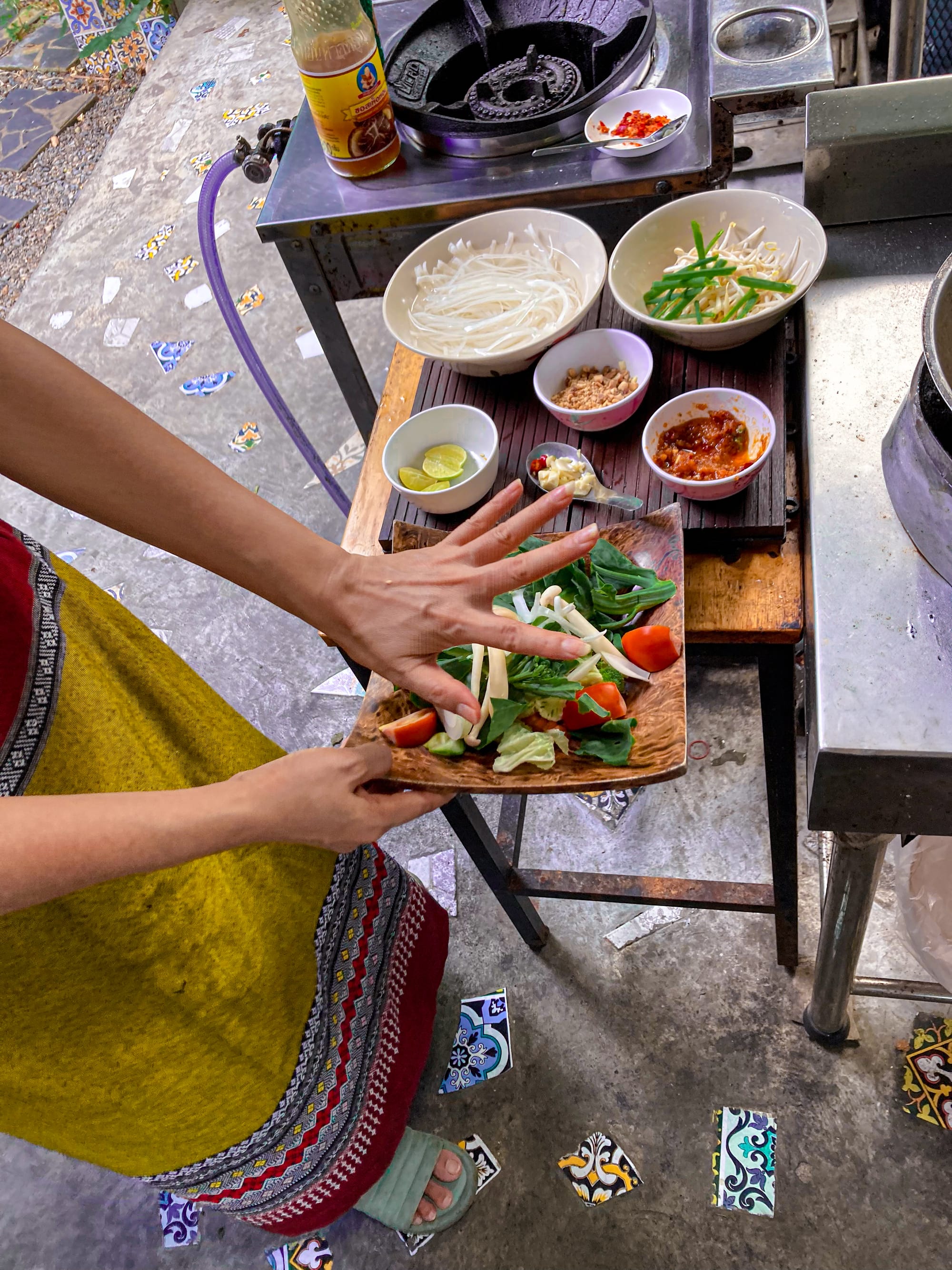
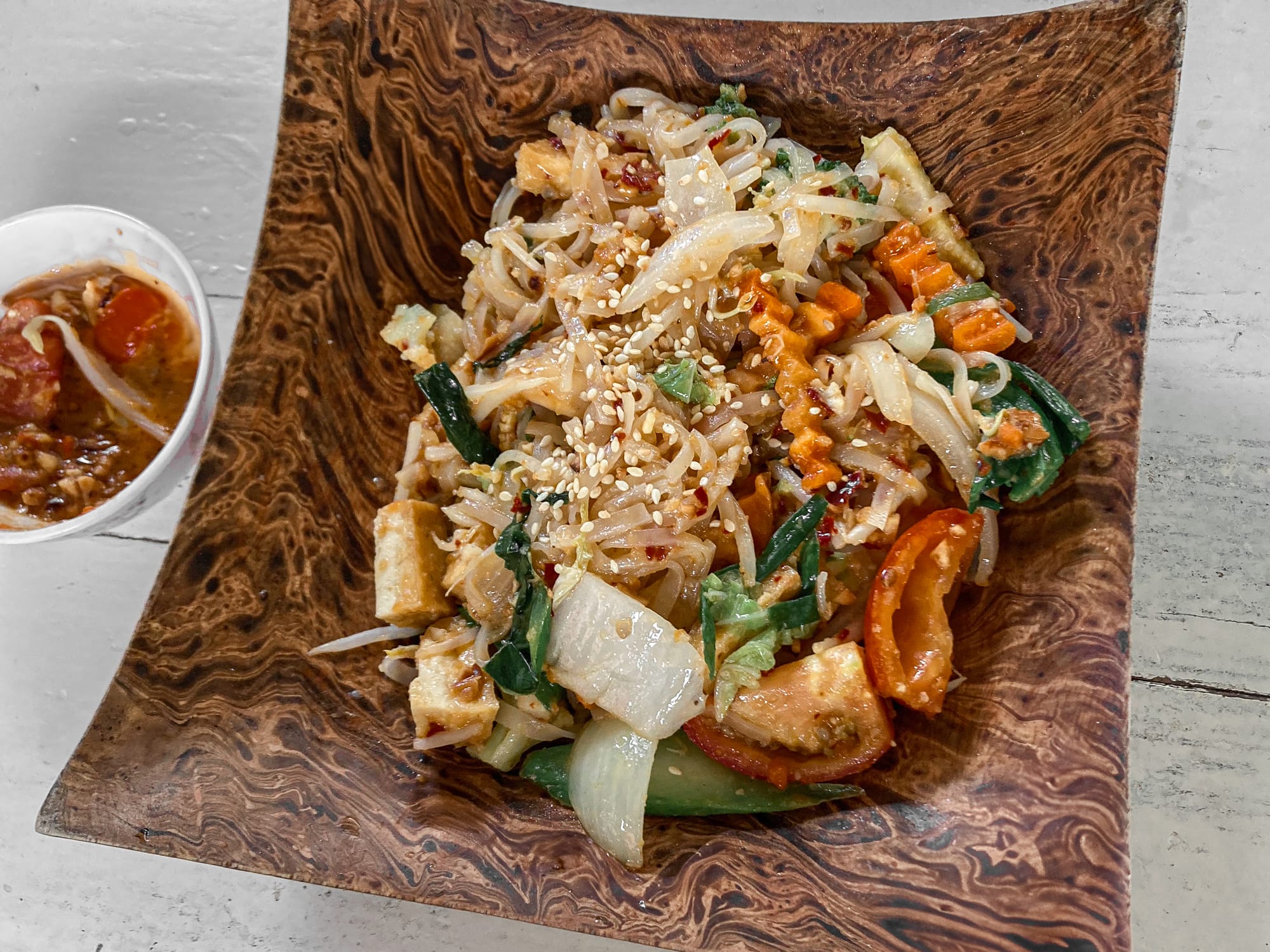
Cooking pad thai at May Kaidee’s vegan class in Chiang Mai, from fresh vegetables to a flavorful finished dish
What stood out wasn’t just the food, but how deeply rooted the flavors were. Instead of refined white sugar, raw sugarcane paste sweetened our sauces. Tofu was balanced with herbs, vegetables were crisp and organic, and the curries layered complexity without any need for animal products. It felt like passing down a rich culinary heritage to a new generation: an invitation to uphold tradition while carrying it into modern kitchens.
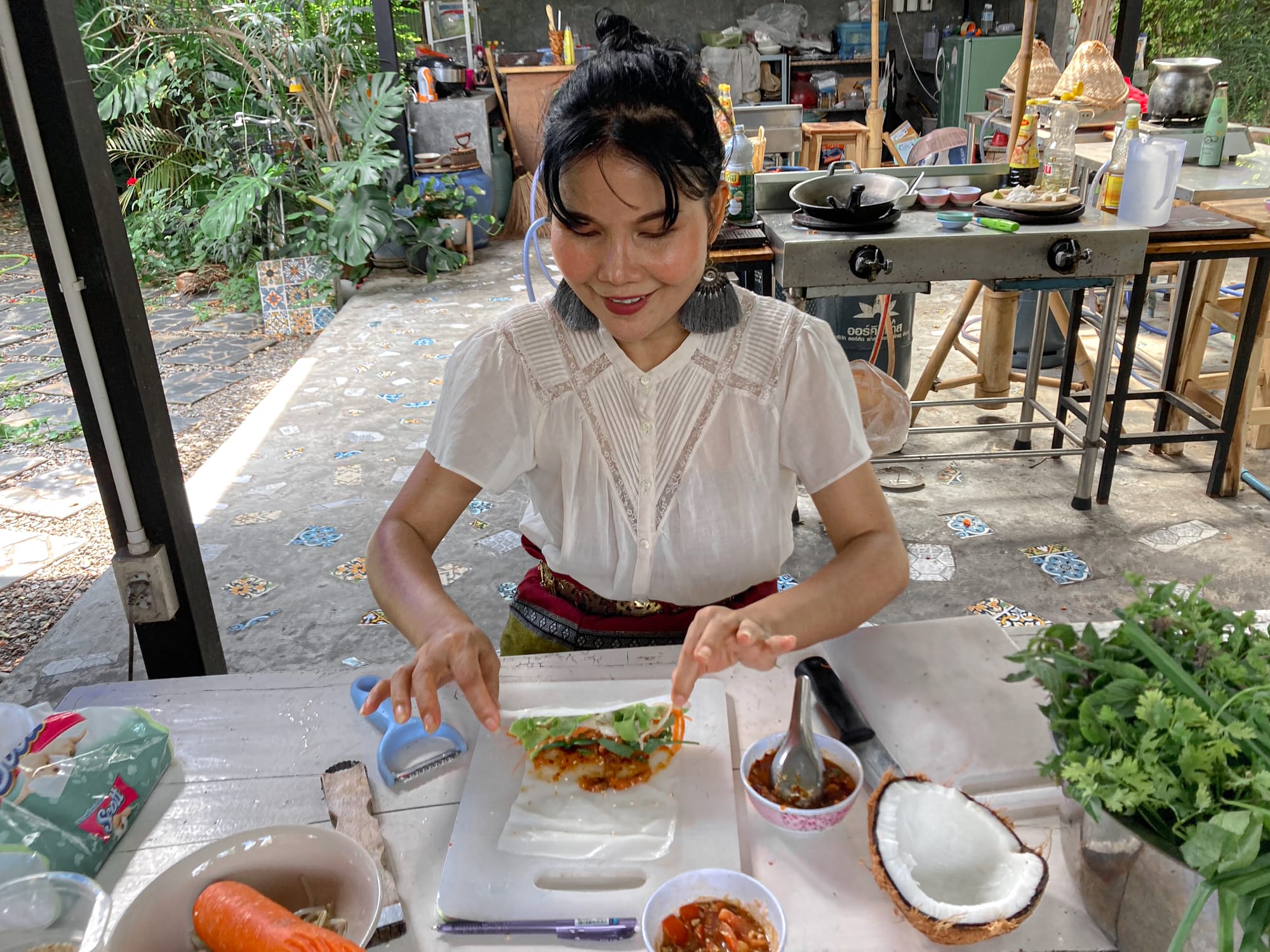
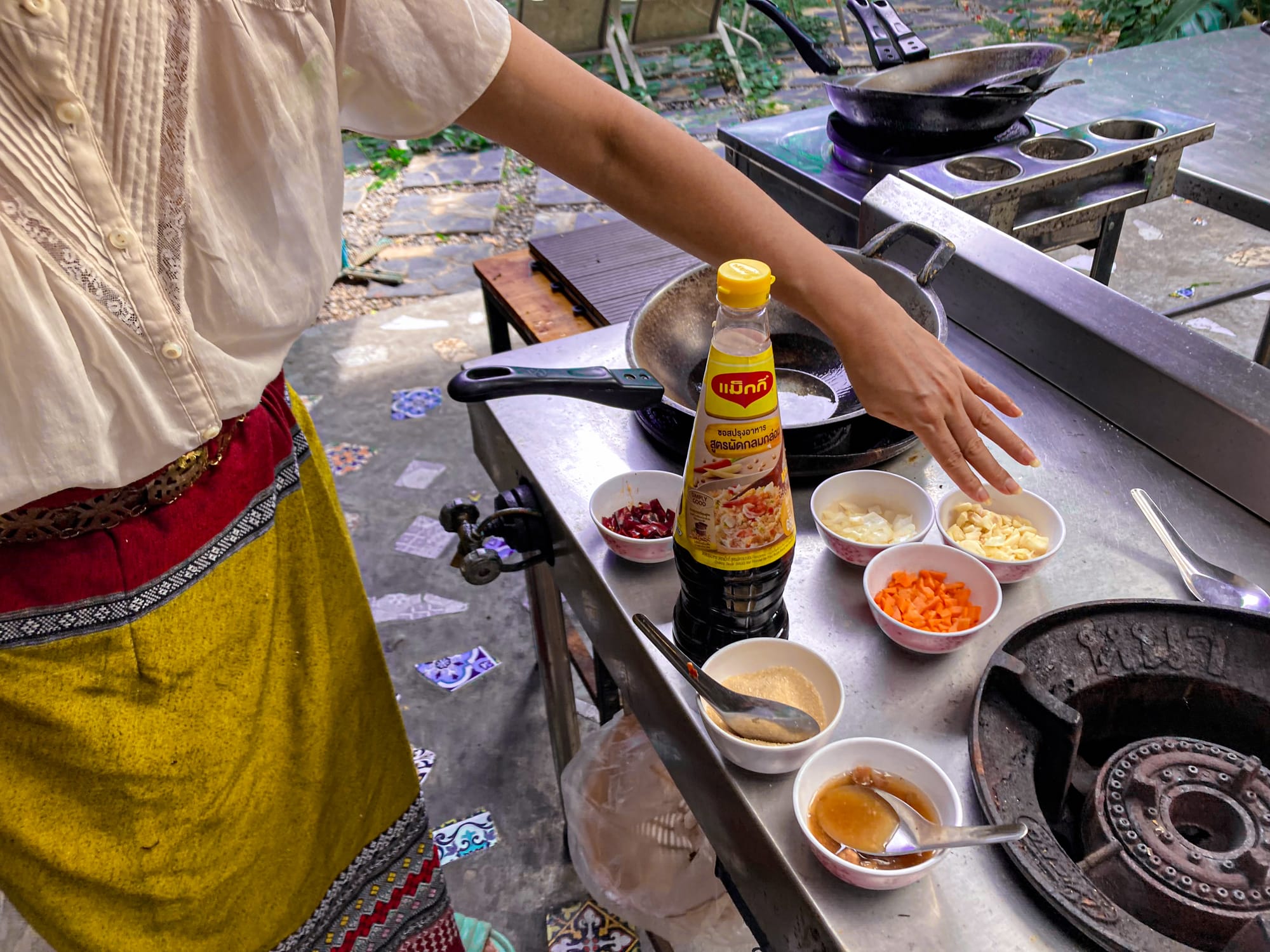
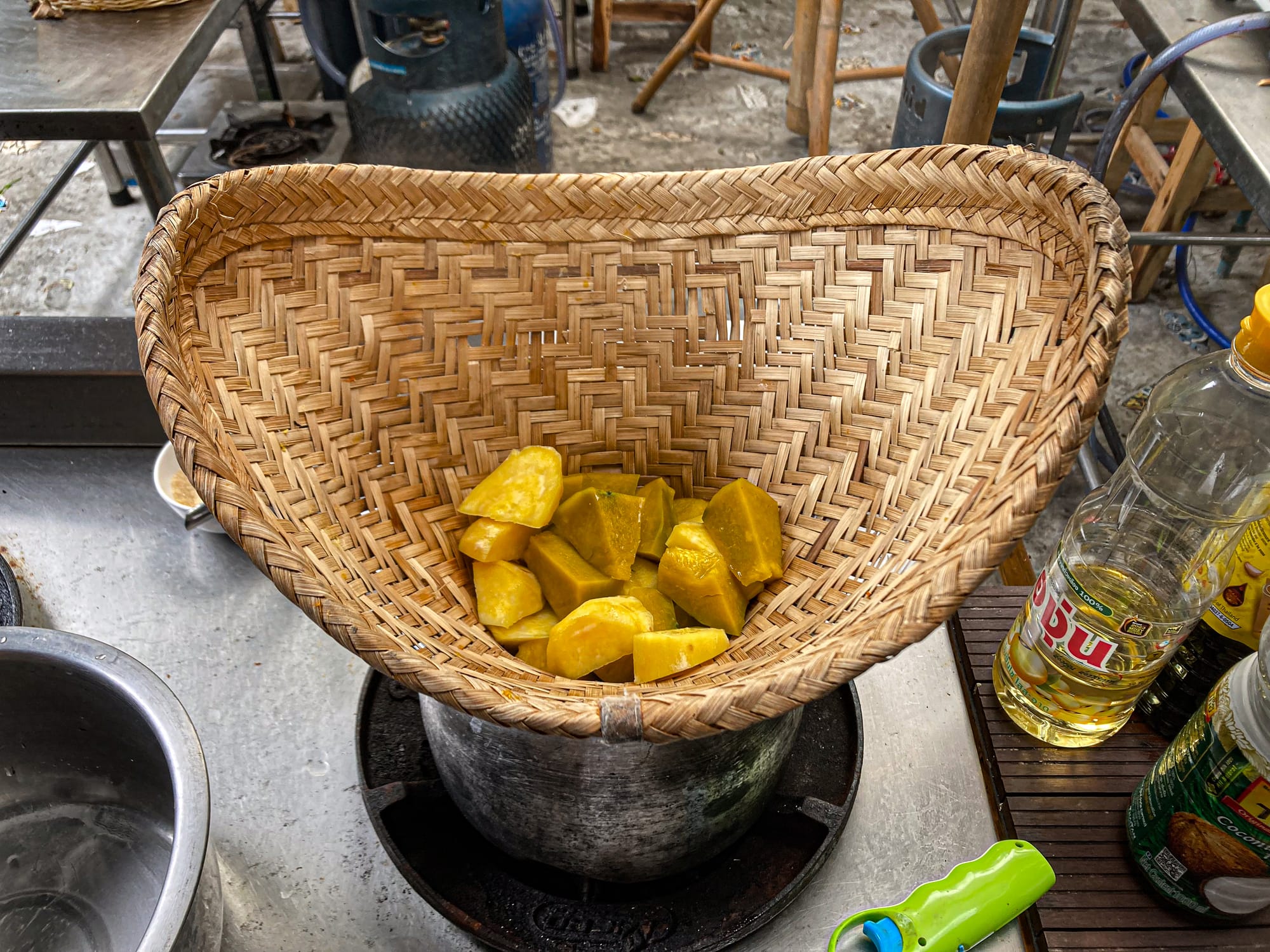
Preparing fresh vegan Thai dishes at May Kaidee’s cooking class
The food itself was abundant. By the time we had finished cooking, the table was overflowing, and we had more than enough leftovers to take home.
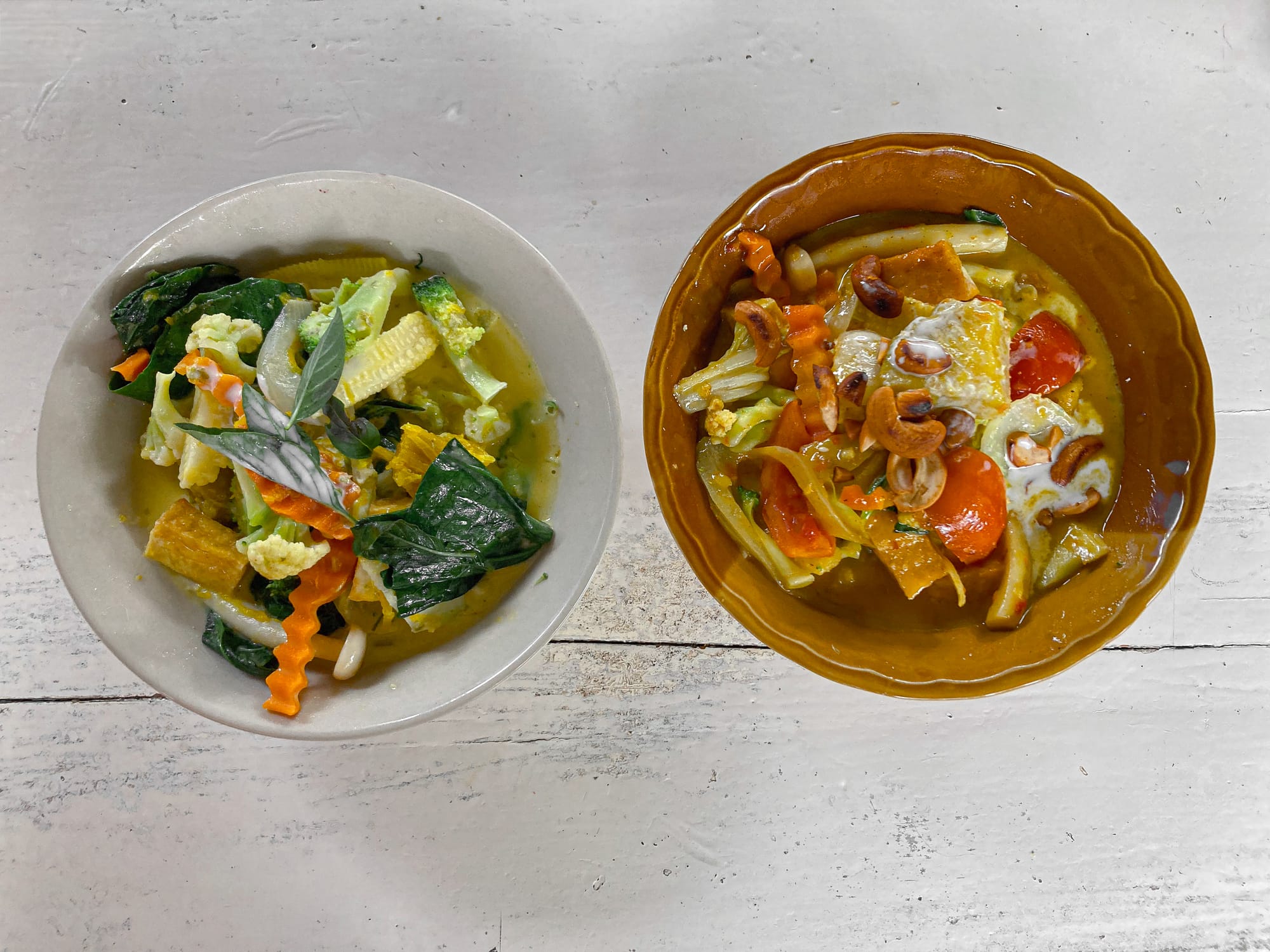
That sense of generosity—both in portion and in spirit—defined the class. More than just recipes, we walked away with knowledge, stories, and flavors that felt like a gift.
Learning Thai flavor from the inside
Part of what made the class so transformative was the way it introduced us to Thai cooking not as a set of instructions, but as a system of balance. Our instructor emphasized the five key elements: sweet, sour, salty, spicy, and bitter. Every dish we cooked was a chance to explore how these elements played against one another.
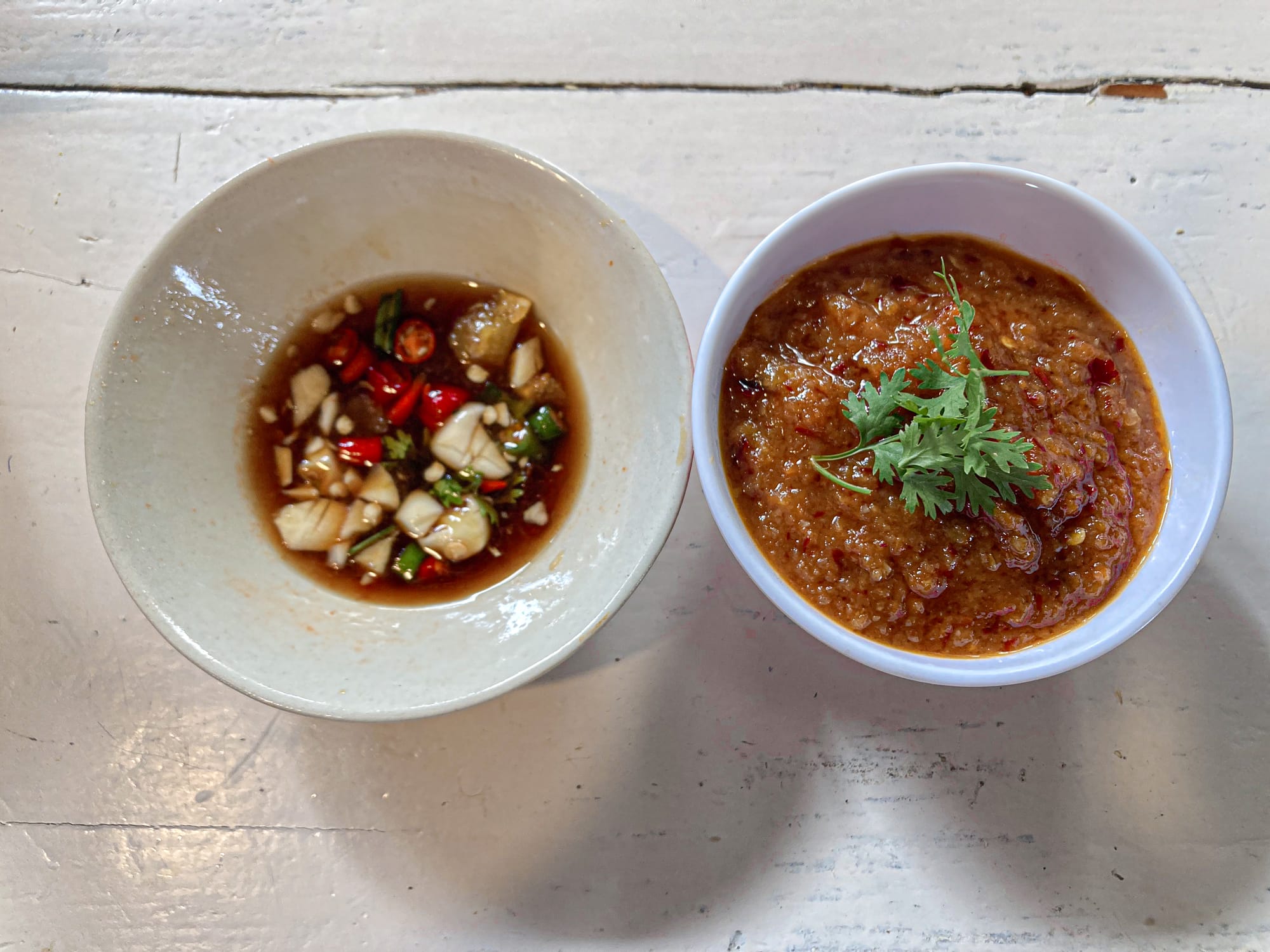
Add too much chili and the dish leaned fiery; balance it with tamarind and lime, and suddenly it sang. It was a lesson not just in recipes, but in how to approach food as a living, adaptive practice. That knowledge is something we carried far beyond Chiang Mai, applying it in our own kitchens long after the class ended.
Dining at the restaurant
Having enjoyed the cooking class so much, the Chiang Mai restaurant ended up becoming one of our local favorites. The menu moves elegantly through salads, curries, noodles, and soups, each deeply rooted in Thai regional flavor but reimagined entirely via plants.
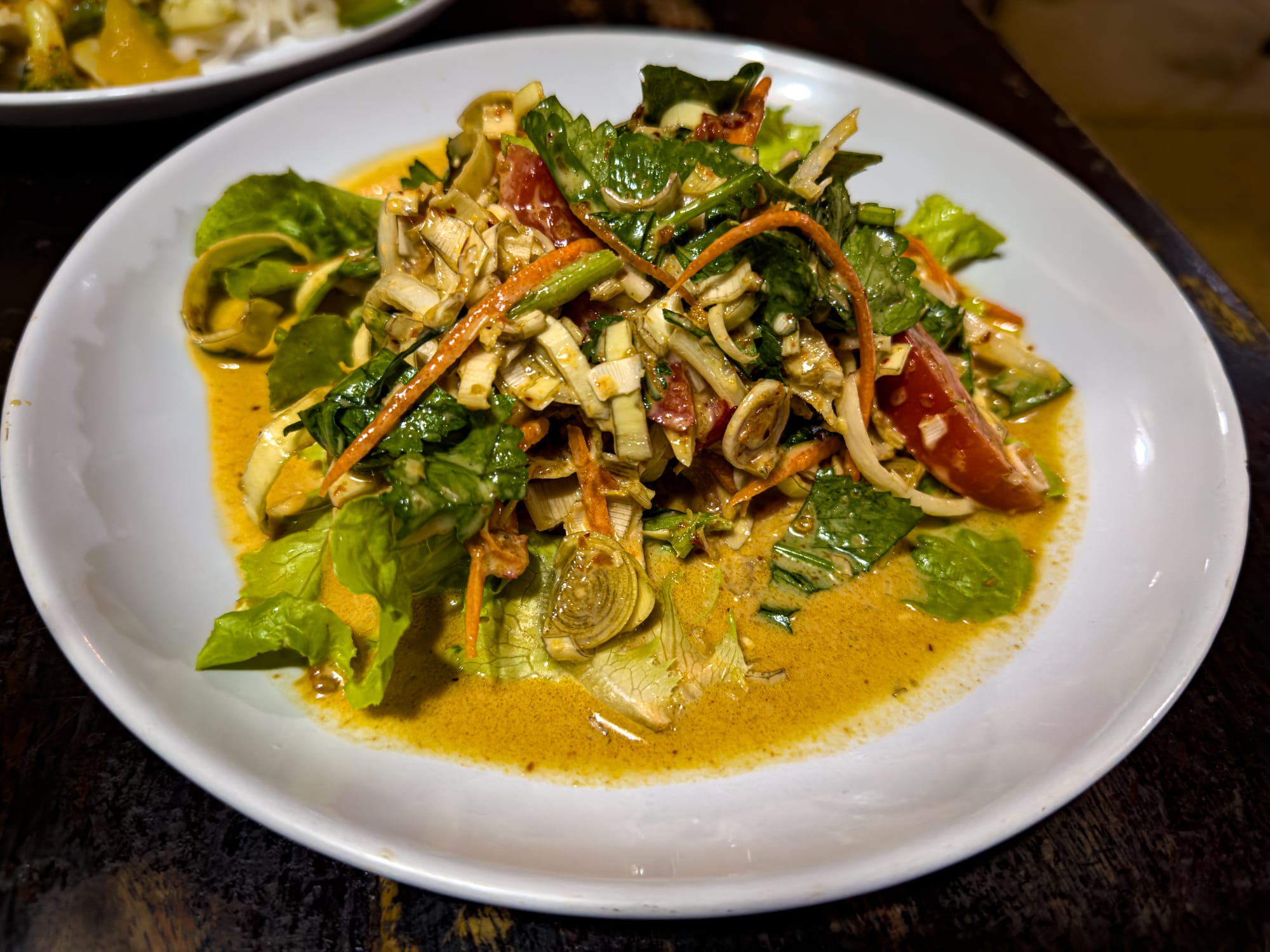
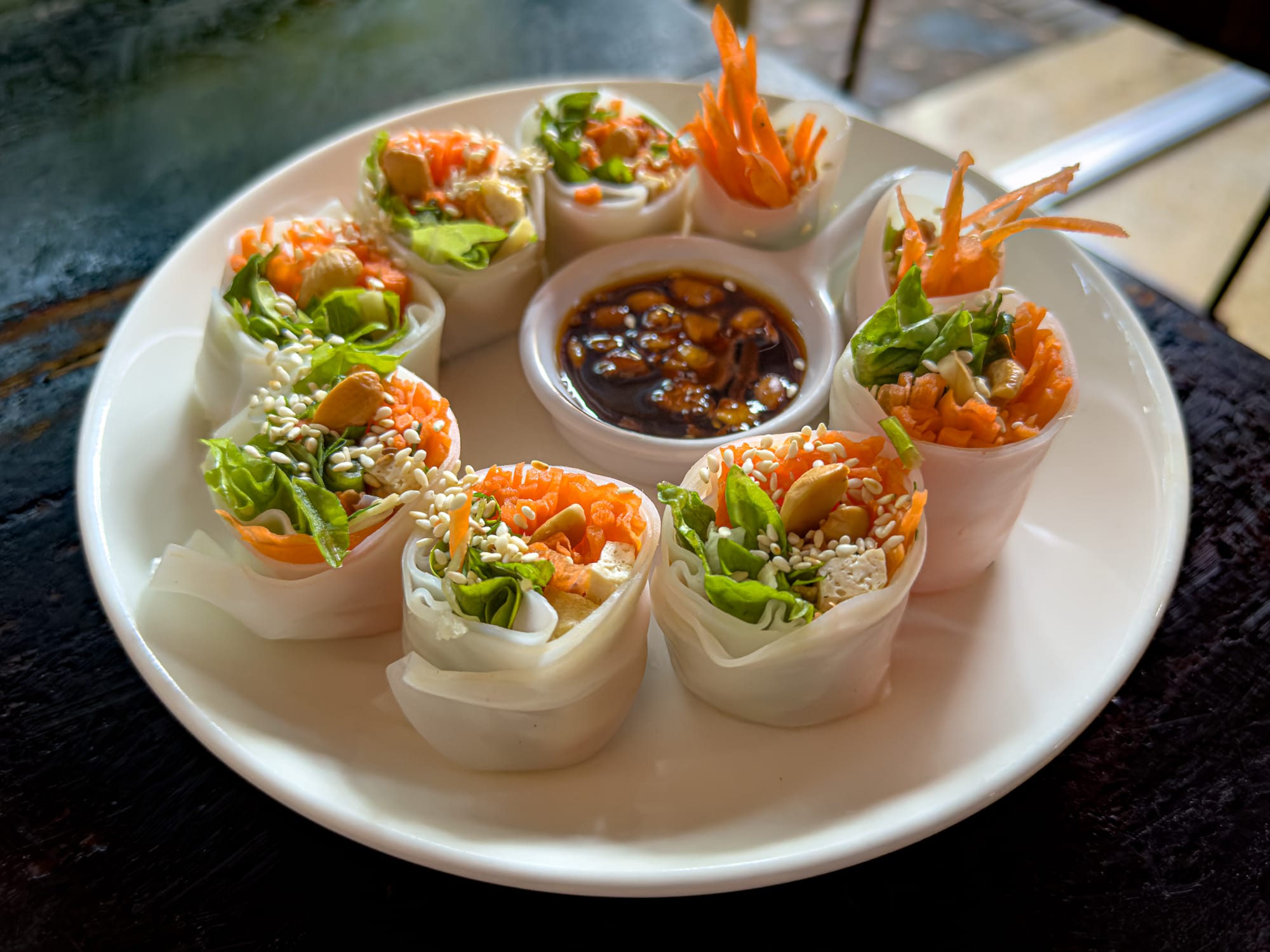
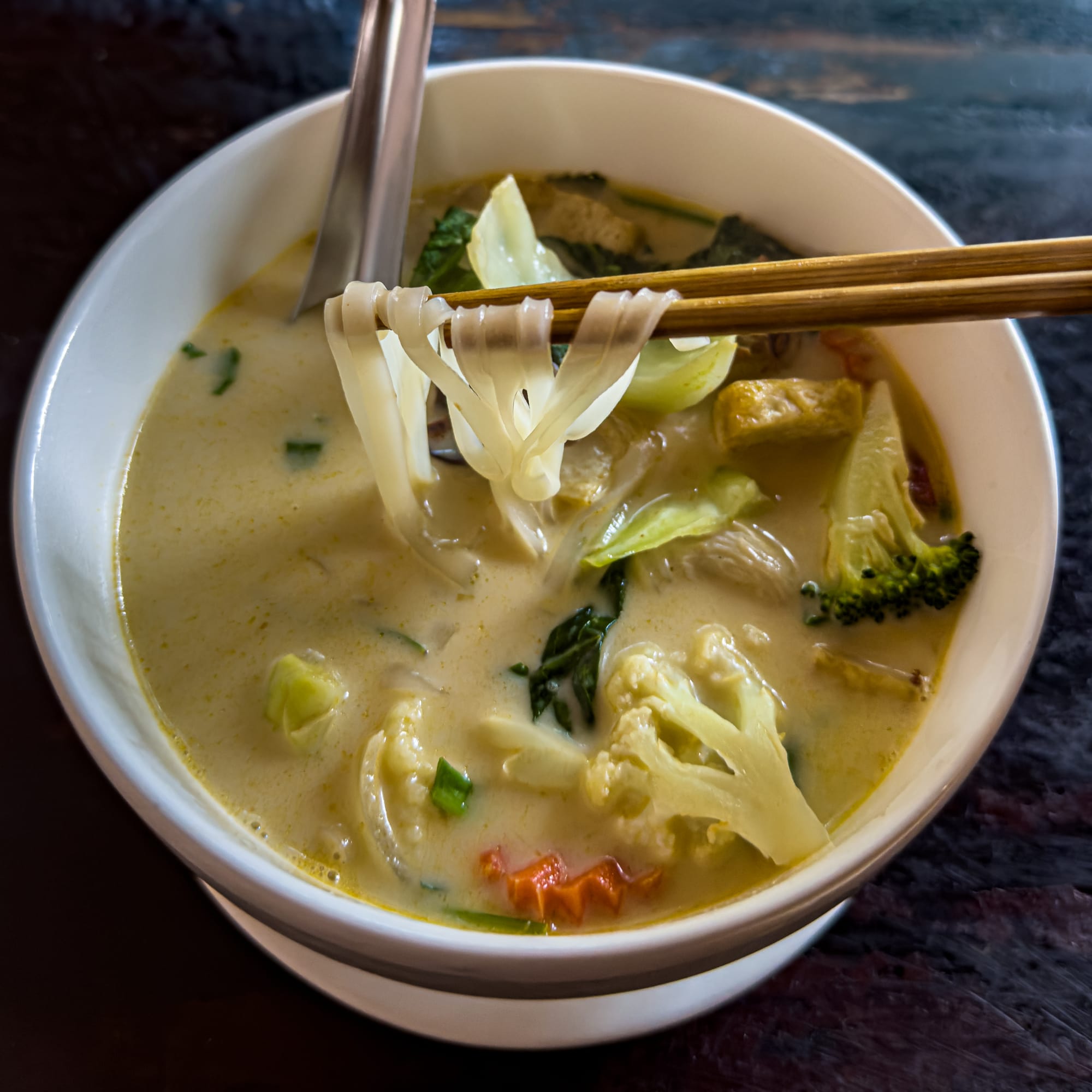
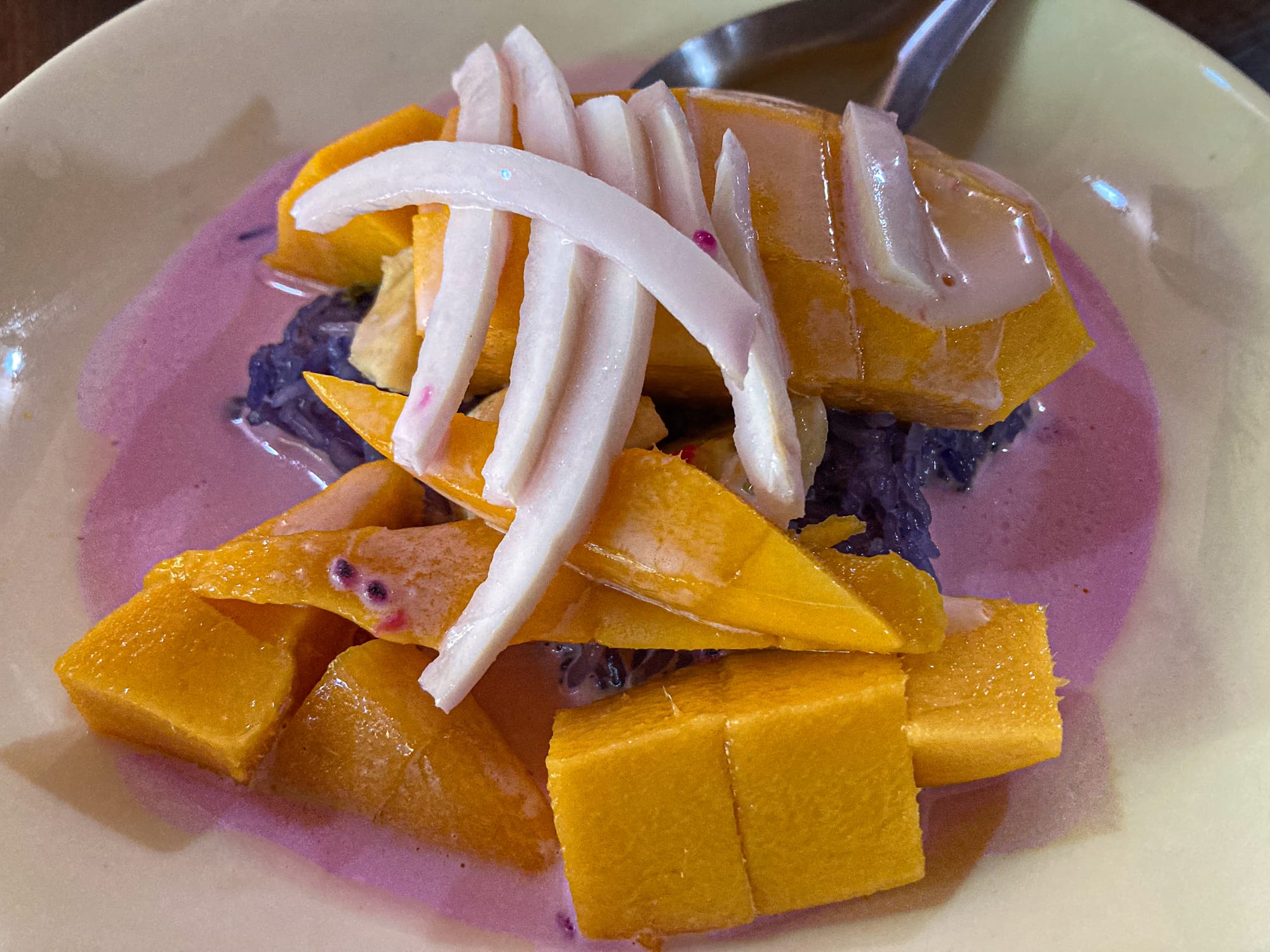
Highlights from May Kaidee’s vegan menu: banana blossom salad, fresh spring rolls, tom kha, and mango sticky rice
The dishes we enjoyed at the restaurant reflected everything we’d learned in he class. The pumpkin hummus was velvety smooth. The green curry glowed, fragrant with Thai basil and hearty mushrooms. The pad thai was chewy, bright, and peanutty. They spring rolls arrived filled with crisp greens and handmade sauce. The mango sticky rice glowed golden, pure sweetness perfectly paired.
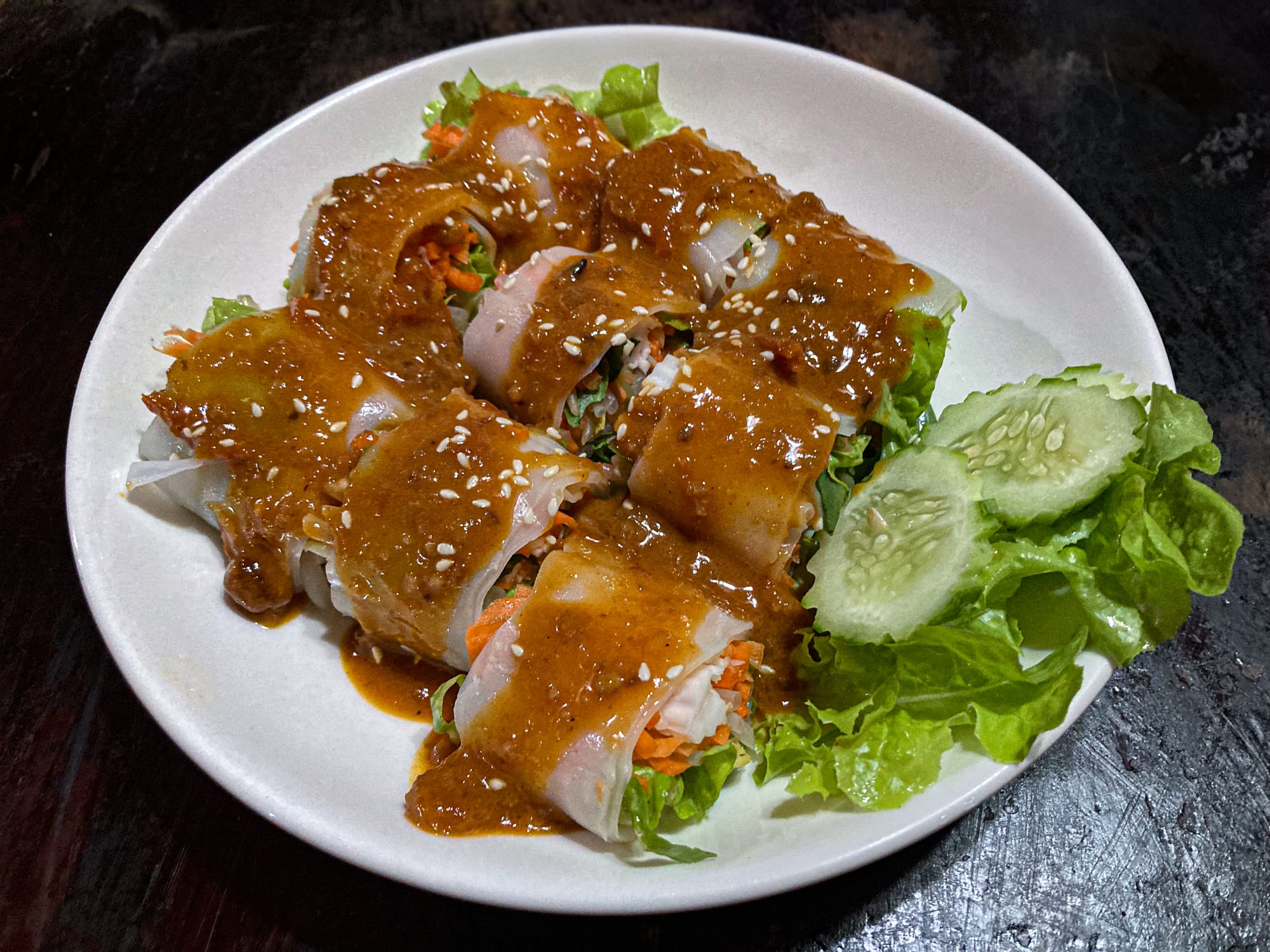
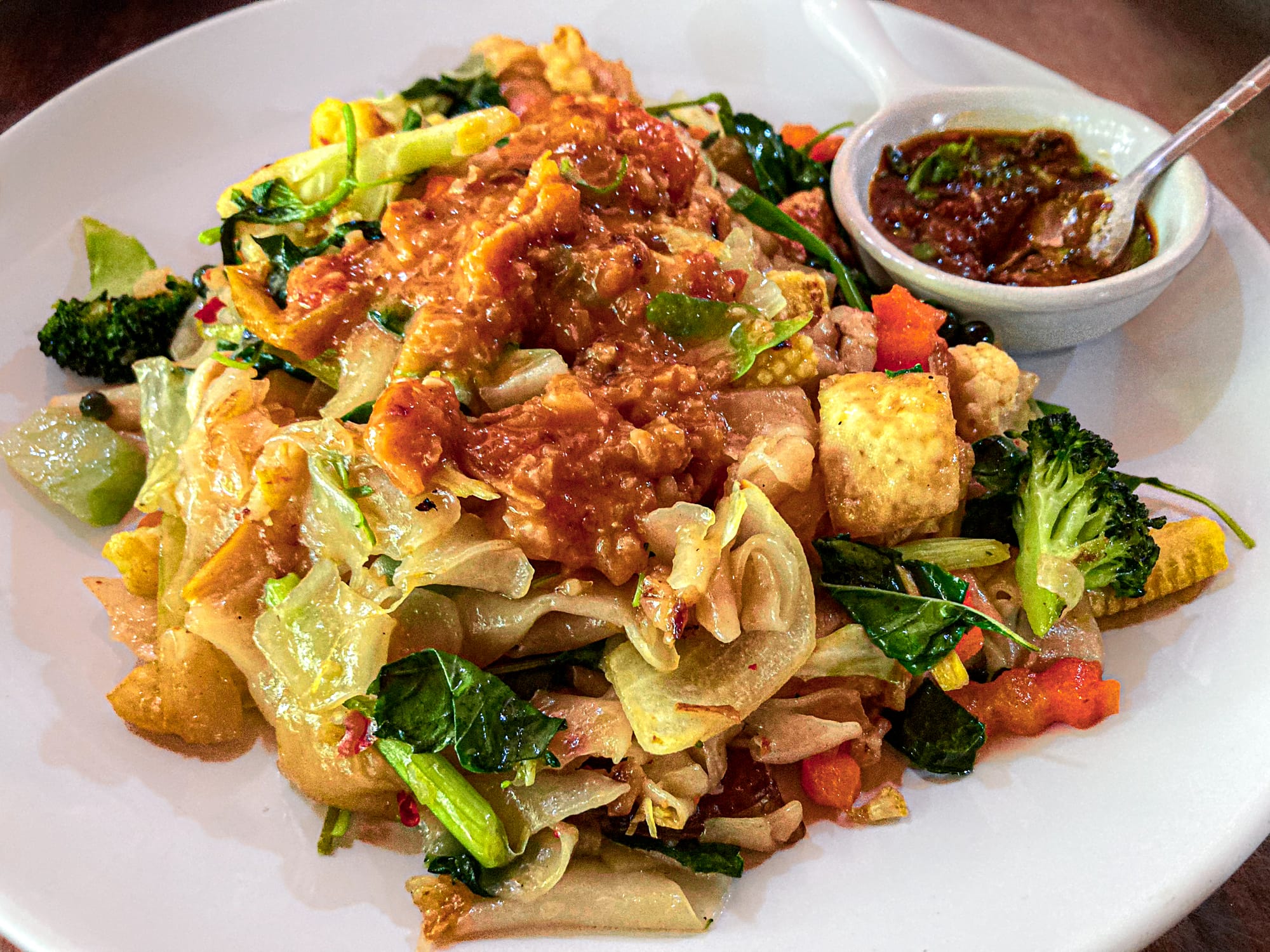
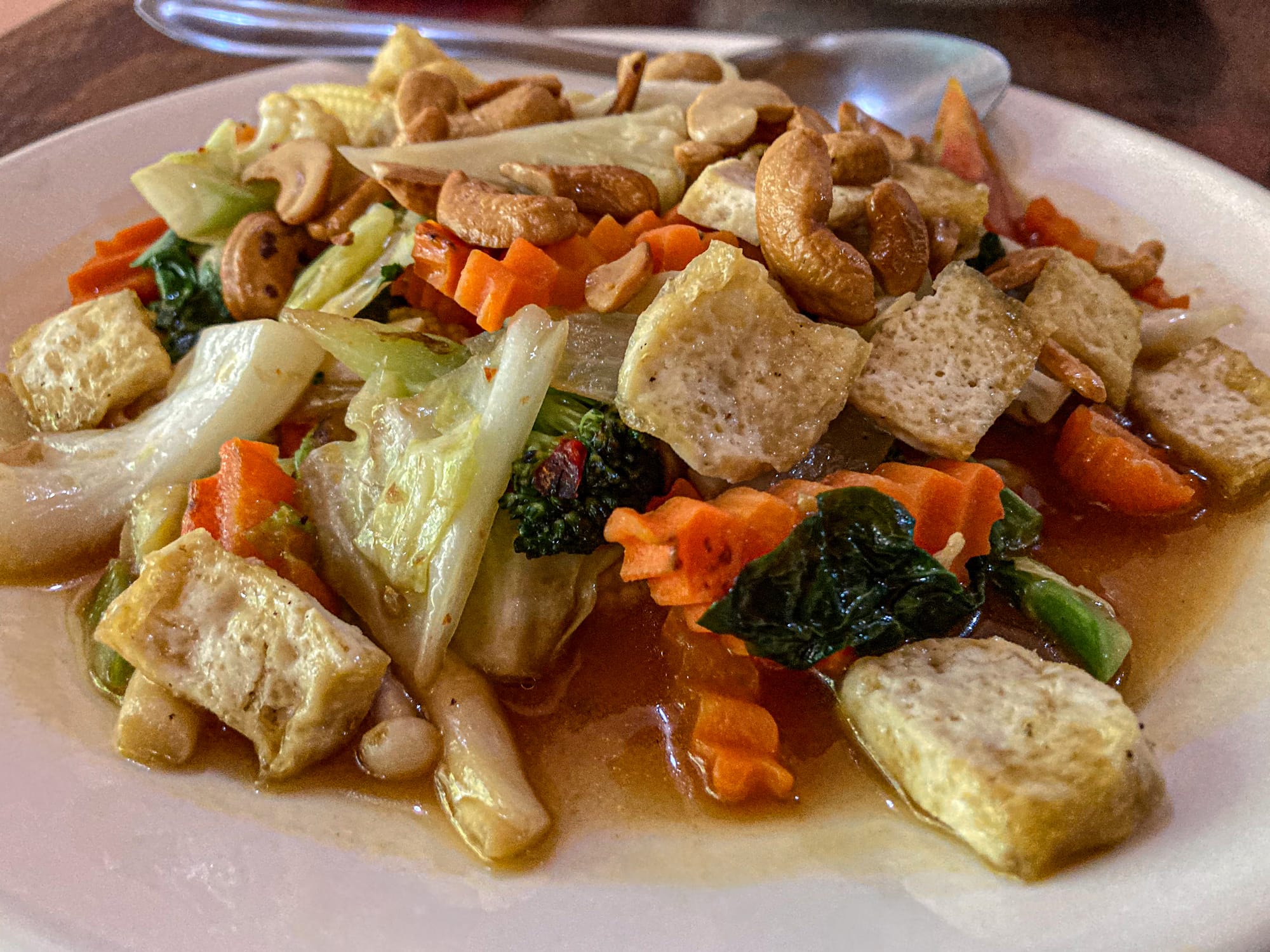
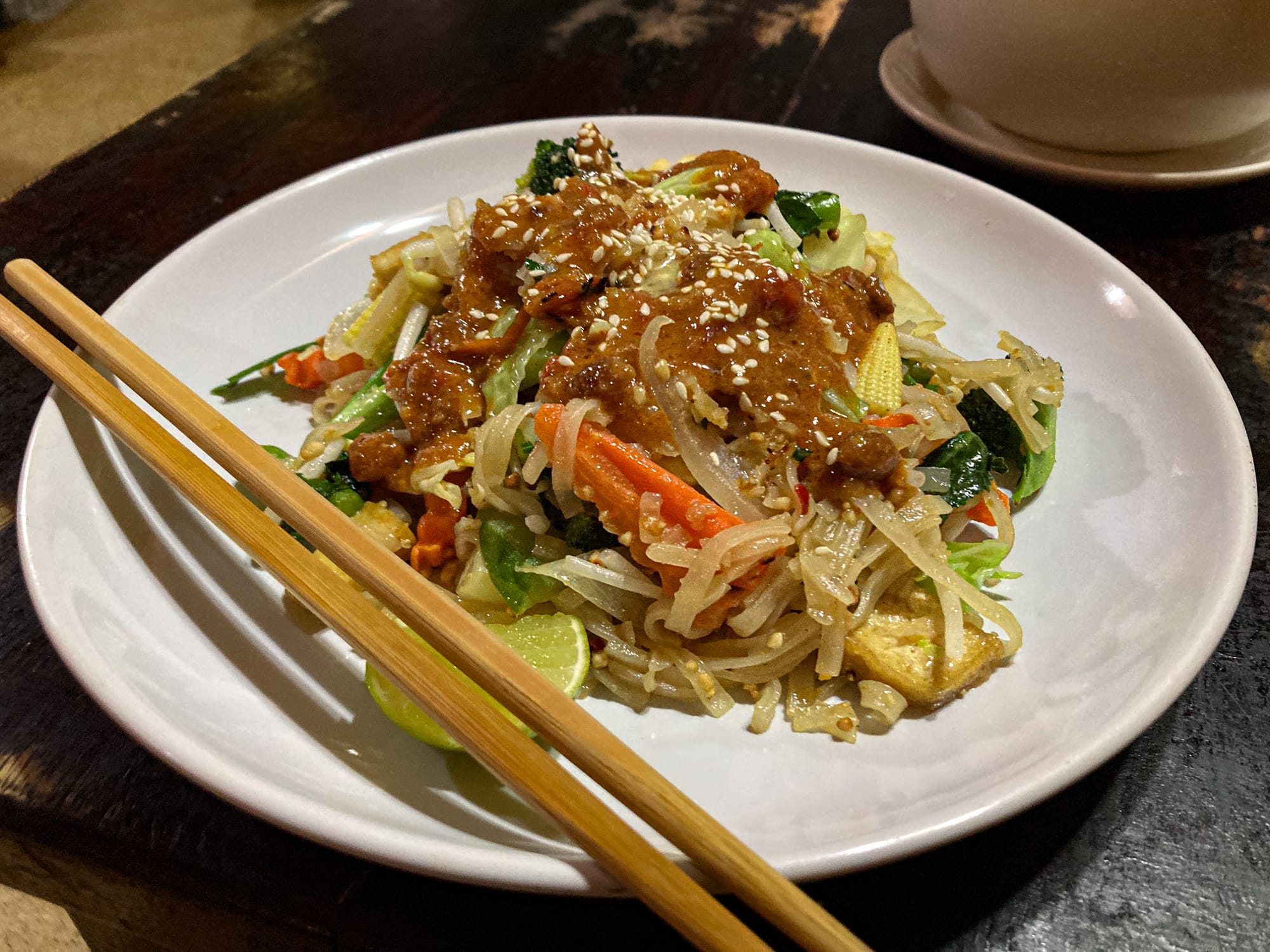
A colorful spread at May Kaidee: fresh spring rolls, stir-fried wide noodles, cashew nut stir-fry, and vegan pad thai
What made it remarkable was how authentic it all felt. This wasn’t vegan food engineered to replicate meat or dairy. It was Thai cuisine expressed fully through plants—faithful to tradition, yet freshly reimagined. In place of the usual fish sauce were instead bold layers of herbs, vegetables, coconut, spice, and the unmistakable freshness of ingredients hand-sourced from local farms.
Pumpkin hummus: the jewel of the menu
At every May Kaidee location—Bangkok, Chiang Mai, or New York—a quiet legend reigns supreme: pumpkin hummus, or tam fak tong. It sounds like a curiosity, but the first spoonful is unforgettable.
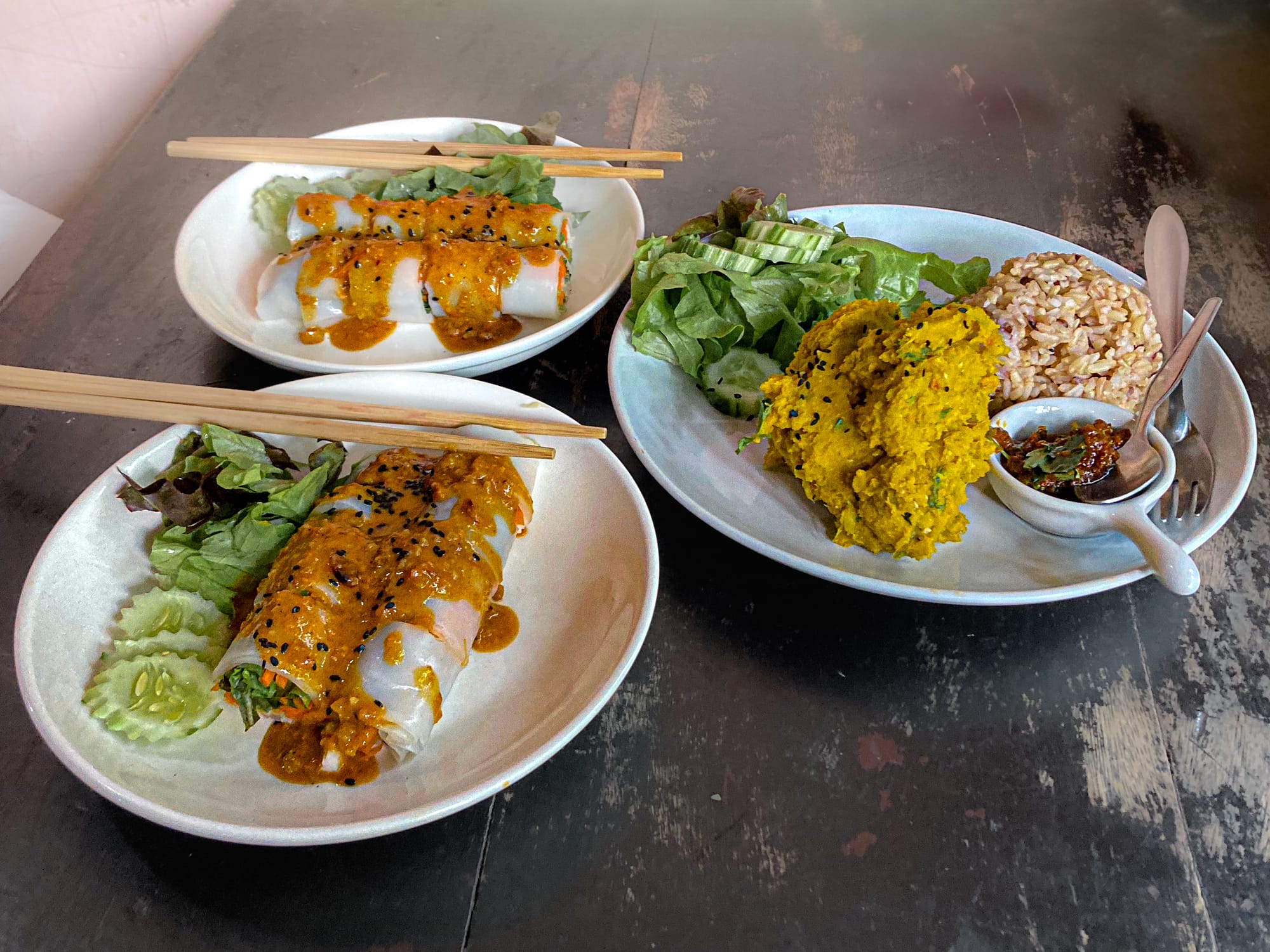
The vivid coral paste merges tender pumpkin, gently toasted cashews, sesame, and coriander in a mortar, often served with brown rice. It’s creamy, subtly spiced, nutty, and savory—and so revered that it has become a signature across every menu. After you’ve tried it once, being served anything else feels like a letdown. The pumpkin hummus is the jewel in May’s plant-based crown.
Why it remains one of our favorite Chiang Mai experiences
May Kaidee's vegan cooking class felt like a heartfelt exploration. In one day, we unearthed knowledge of ingredients, of balance, of cooking as homemade tradition rather than factory formula.
Beyond the flavors, the genuine sweetness was unforgettable: the instructor patiently showing how to fold rice paper for spring rolls, the careful layering of flavors in curries, the hum of authenticity pulsing across every instruction.
We highly recommend the class and the restaurant to anyone in Chiang Mai.






